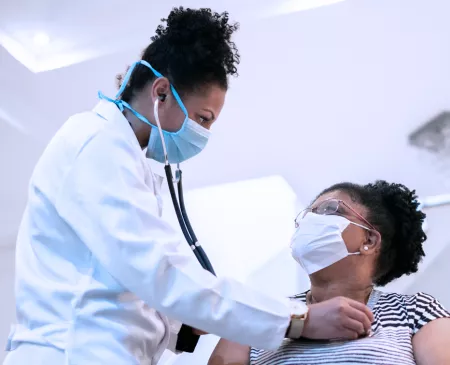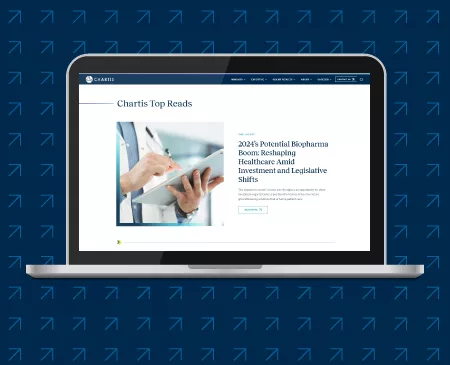The Buzz This Week
Updated October 31: After 3 weeks of infighting among Republicans in the United States House of Representatives, Mike Johnson (R-LA) was elected as the new Speaker of the House on October 25, after Rep. Kevin McCarthy (R-CA) was voted out of that that position in a 216-210 vote on October 3—becoming the first Speaker of the House to be ousted in the history of the U.S. That move followed the last-minute September 30 passing of a “continuing resolution” temporary budget extension to avoid a government shutdown. The activity that led up to this extension involved highly contentious debate and caused many Republicans to lose faith in Rep. McCarthy. The delay in electing a new Speaker essentially paralyzed the House’s activities for weeks. With the continuing resolution only extending through November 17, that leaves very little time to pass the federal budget for fiscal year 2024 or put into place another budget extension.
If the government does shut down in mid-November, it could have a significant impact on healthcare in the following ways:
- A contingency plan for federal government departments would take effect. The current plan, created by the White House Office of Management and Budget, would only allow funding for 58% of employees of the Department of Health and Human Services, with the rest furloughed. Half of the employees at the Centers for Medicare and Medicaid Services would be furloughed.
- Medicare would continue, but new enrollment may be paused. Entitlement programs such as Medicare and Social Security would continue because they are funded by taxes and premiums and don’t require annual appropriations. However, new enrollment in Medicare could be paused, as it was during the 1995-1996 government shutdown when an estimated 10,000 people were not able to join the program, per an analysis by the Committee for a Responsible Federal Budget.
- The Medicaid program has funding through the first quarter of 2024. But an extended shutdown would affect the program, and millions of low-income families could lose access to services.
- Clinical research and public health activities could be inhibited. As a “discretionary program,” The National Institutes of Health would experience furloughs, and funding allocations would likely be delayed, hampering progress for clinical research. While the Centers for Disease Control and Prevention (CDC) would similarly experience furloughs and diminished activities, a provision in the White House’s contingency plan allows for continued responses to disease outbreaks, maintenance of laboratory animals, and emergency operations. Public health activities run through the CDC would likely suffer due to the staff furloughs.
- Food safety inspections run through the U.S. Food and Drug Administration would be delayed. Drug approvals would likely continue as they are largely funded by fees paid by drugmakers.
- Safety net services provided by federally qualified health centers (FQHCs) might be limited. Their second largest source of funding is the federal government.
Why It Matters
The health disparities among minority and low-income populations illuminated during the pandemic persist. A government shutdown would only exacerbate those disparities as lower-income individuals and families would be disproportionately affected.
FQHCs may have to limit certain services and/or freeze hiring, and Medicaid could be impacted if it is an extended shutdown. The head of one FQHC in Pittsburgh said a shutdown would likely mean their clinic would have to limit hours or cut services such as dental care and behavioral health.
Individuals relying on care from community clinics and/or through Medicaid might experience progression of health conditions. In an extreme scenario, mortality rates for those populations might increase. Already crowded hospital Emergency Departments would likely see patient volumes increase as people seek services no longer available to them elsewhere.
Unfortunately, organizations have limited options to prepare for a potential shutdown. Hospitals and health systems may need to have plans that would enable a ramp up of services to cover communities reliant on FQHCs. But with financial margins that are still challenged and workforce shortages, that may be difficult. Some health systems have partnered with FQHCs to support them by providing workspace for outreach case managers in their emergency rooms; providing travel vouchers for patients at FQHCs who need more advanced services at a hospital in the larger health system; and donating resources and staff to the FQHC; among other supportive initiatives. More of those partnerships may be needed to prop up FQHCs in the event of a shutdown. FQHCs may be able to solicit additional grants themselves to increase available funds or more tightly manage expenses. But as one leader of an FQHC in southwest Pennsylvania commented, "You always have to worry because you can never predict the future and what may happen."
RELATED LINKS
Axios: Rep. Mike Johnson says avoiding shutdown is priority as House speaker
National Public Radio: What Happens to Health Programs if the Federal Government Shuts Down?
Committee for a Responsible Federal Budget: Government Shutdowns Q&A: Everything You Should Know
Axios:
Health Programs Could Be Stranded by Government Shutdown
HealthLeaders Media:
How Hospitals and Federally Qualified Health Centers Should Collaborate
Editorial advisor: Roger Ray, MD, Chief Physician Executive.






